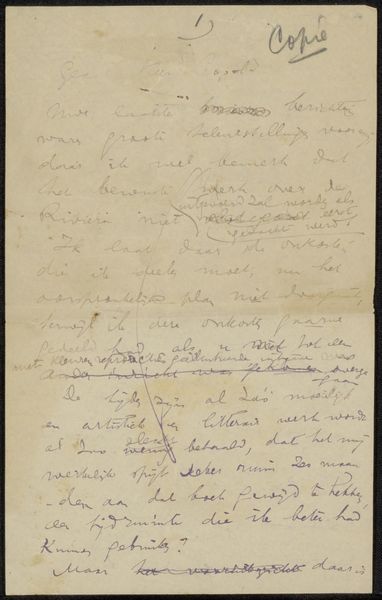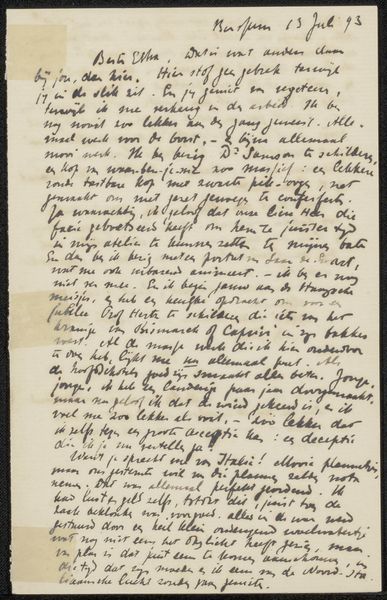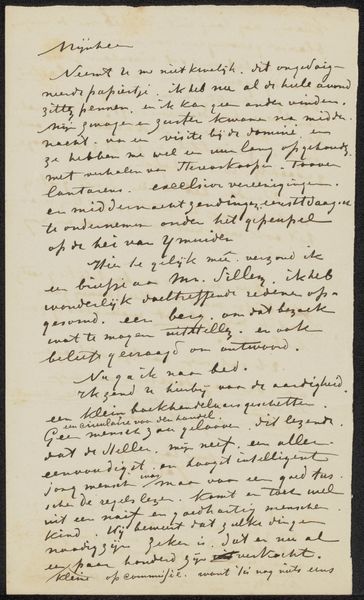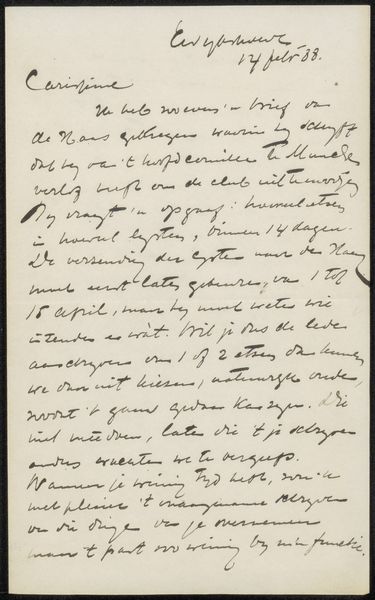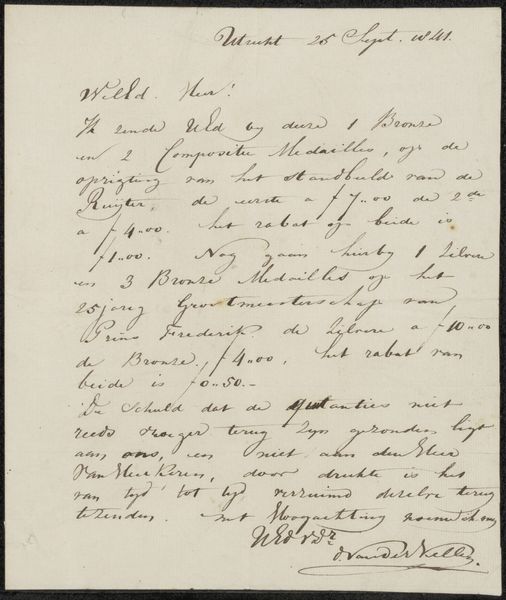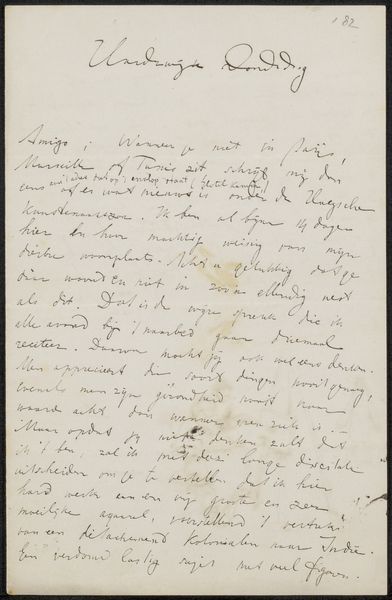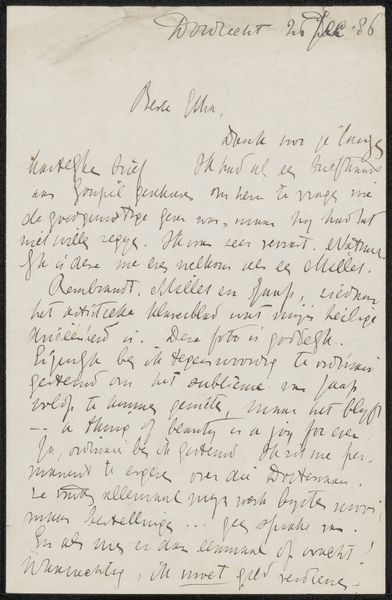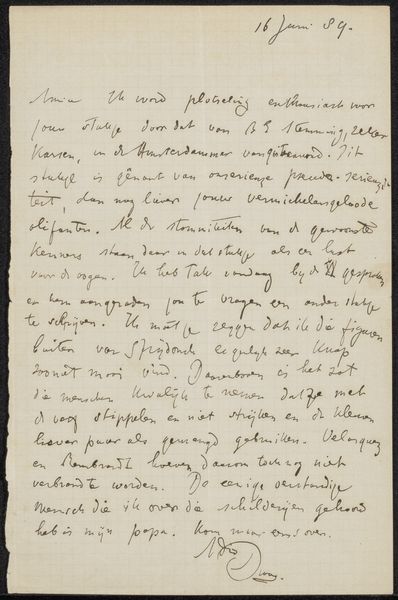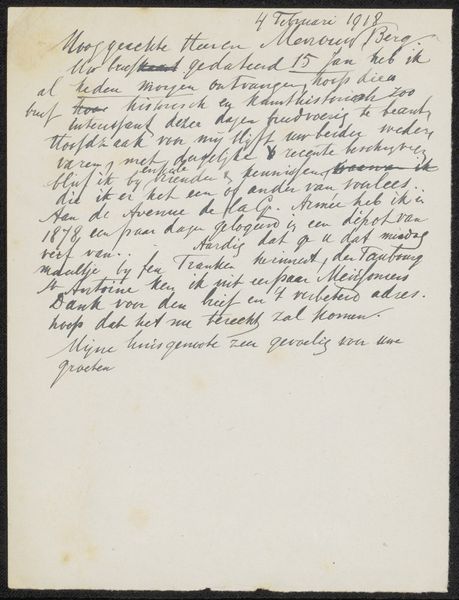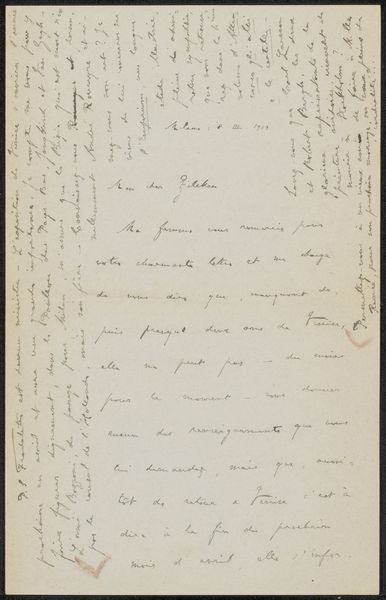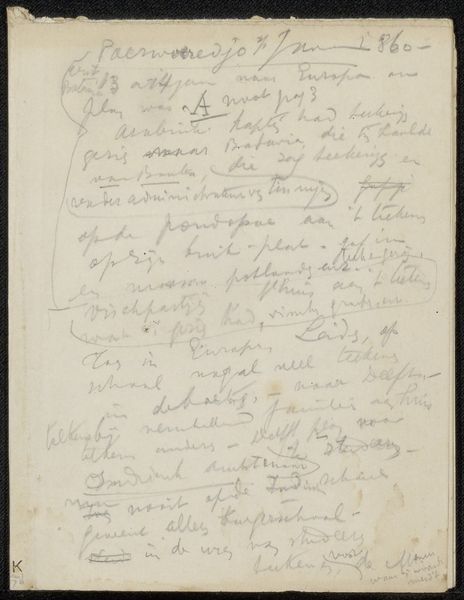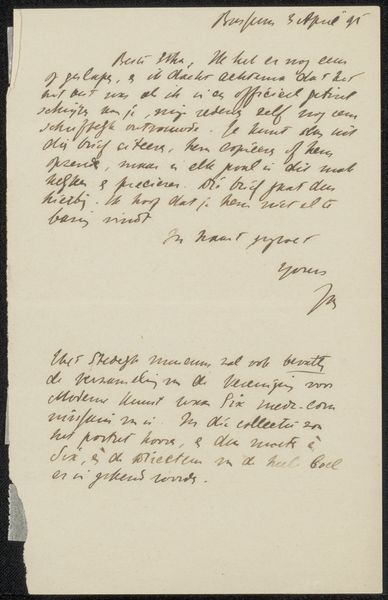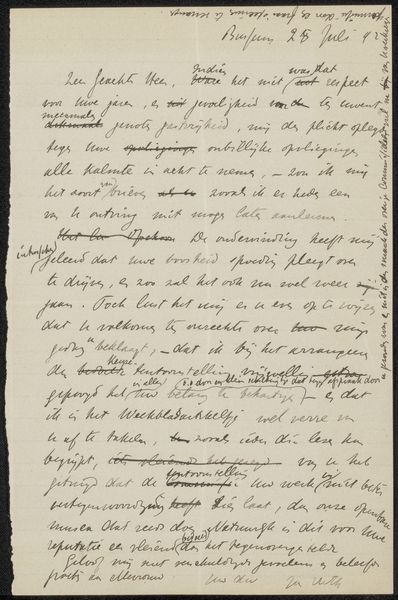
drawing, mixed-media, paper, ink, pen
#
portrait
#
drawing
#
mixed-media
#
hand-lettering
#
ink paper printed
#
hand drawn type
#
paper
#
personal sketchbook
#
ink
#
ink drawing experimentation
#
pen-ink sketch
#
ink colored
#
pen work
#
sketchbook drawing
#
pen
#
sketchbook art
#
modernism
#
calligraphy
Copyright: Rijks Museum: Open Domain
Curator: This is a fascinating piece from the Rijksmuseum archive, simply titled "Aantekening uit archief Philip Zilcken"—which translates to "Note from the Philip Zilcken archive." It's a mixed-media work on paper, dating from 1867 to 1930, incorporating pen, ink, and who knows what else. What are your initial thoughts? Editor: Intimacy. It feels deeply personal. I’m getting this quiet whisper from faded ink and hand-lettered musings, like eavesdropping on a private conversation from a bygone era. It makes me want to slow down time and simply absorb the visual texture of his work. Curator: Zilcken was a really interesting figure – an artist, critic, and art dealer. His connections across the European art scene were vast. Think about how this connects back to the role of sketchbooks as working diaries, in the institutional contexts of collections management policies and acquisition patterns, a key point to consider when exploring archives and collections from artist like Zilcken. Editor: Right, you're speaking to this network that it's part of. I suppose I'm less drawn to that sort of mapping than I am captivated by this immediate connection with him. He appears, at once, as though he might say hello, but it also is so difficult to be certain where these words even come from. It is his own language. This piece reads to me more as process—experimentation and those moments of insight coalescing right there on the page. Almost like automatic writing or free association in art. Curator: Absolutely, the sense of immediacy is palpable. Yet, isn't it also significant that this "personal sketchbook" finds its way into a public institution? Consider the implications of displaying something so private, blurring the lines between the personal and public sphere and its meaning when archived in the context of how an institution will ultimately represent this artist? It changes the entire reading of what may just have been meant for personal use. Editor: It really does ask interesting questions, I suppose I'm drawn to that line that has been struck by making private reflection such as this visible. I leave here feeling even more pensive than when I walked in, that says something of it to me. Curator: Indeed, it prompts reflection on both the artist's internal world and the museum's role in shaping public perceptions of that world.
Comments
No comments
Be the first to comment and join the conversation on the ultimate creative platform.
